Beef grading in the United States has been implemented according to standards set by the U.S. Department of Agriculture’s Agricultural Marketing Service (USDA-AMS) in 1926. Amendments, however, are periodically made to the beef standards to reflect new scientific findings. Recently, the USDA-AMS posted a notice on the Federal Register for comments on modernizing standards to allow for the use of documentation of actual age or dentition, a method used by the USDA’s Food Safety Inspection Services (FSIS), when determining beef carcass quality grades. This amendment would allow carcasses with advanced physiological maturity, which are less than 30 months of age by dentition or documentation, to still be graded as A maturity.
Currently, USDA beef quality grades are determined by using marbling score and physiological maturity (A-E) of carcasses. Visual indicators of physiological maturity are: rib shape and size, ossification of the sacral vertebrae and thoracic cartilaginous buttons and lean color at the 12th-13th rib interface. Cattle less than 30 months old are generally assumed to produce A maturity carcasses, while cattle 30 to 42 months and 42 to 72 months are expected to produce B and C maturity carcasses, respectively (Tatum, 2007). But cattle younger than 30 months commonly produce B maturity or older carcasses based on their physiological maturity. In fact, O’Connor (2007) found that cattle less than 24 months of age produce 9 percent B maturity and 3 percent C maturity carcasses. Heifers are even more vulnerable to be categorized as B maturity or older, as estrogen increases skeletal ossification causing advanced physiological maturity. Tatum (2011) reported that heifers younger than 27 months are seven times more likely to produce B maturity carcasses and 11 times more likely to produce C maturity carcasses versus steers of the same age.
Using the current USDA beef quality grading guidelines, A maturity carcasses with a small degree of marbling grade Choice, while B and C maturity carcasses with a similar marbling score grade Standard and Commercial or Utility, respectively. In July 2017, Standard carcasses received a discount of approximately $28 per hundredweight, while C and older maturity carcasses received a discount of $34 per hundredweight compared with Choice carcasses (USDA, 2017). The current research was conducted to determine whether discounts are warranted based on palatability of product from A, B, and C maturity heifer carcasses less than 30 months of age by dentition.
Carcasses were selected from feedlot heifers finished in the Western United States and Canada. Carcass data and product from 90 heifer carcasses were collected on four days over a three-month period at a commercial beef-processing facility. All carcasses were less than 30 months old by dentition, but chronological age was not known. Based on physiological maturity, 30 carcasses were selected per A, B and C maturity group, and all carcasses were selected to have Small to Modest marbling scores. Average marbling scores for each maturity group were similar. Average carcass weight was 906 pounds, and no carcass weight differences occurred. Beef strip loins and outside rounds were obtained, and following a 14-day aging period, steaks were cut from each and used to analyze cook loss, Warner-Bratzler Shear Force (WBSF), insoluble and soluble collagen, and consumer sensory attributes. Data were analyzed using the Mixed Model procedure of the Statistical Analysis System (SAS Institute, Inc., Cary, N.C.). Significance was determined at P < 0.05 and data were considered trending at P < 0.10.
No differences in cook loss, WBSF or insoluble and soluble collagen of strip loin or outside round steaks were observed due to carcass maturity. For the consumer taste panel, 72 panelists evaluated steak samples from the three maturity groups on overall acceptability, tenderness, juiciness and flavor. Interestingly, strip loin steaks from C maturity carcasses tended to have higher overall acceptability and juiciness compared with steaks from B maturity carcasses, but steaks from B or C maturity carcasses did not differ from those of A maturity carcasses (Figure 1). Consumer sensory panel results for the outside round steaks revealed no differences between the three maturity groups.
Figure 1. Consumer panel analysis of strip loin steaks.
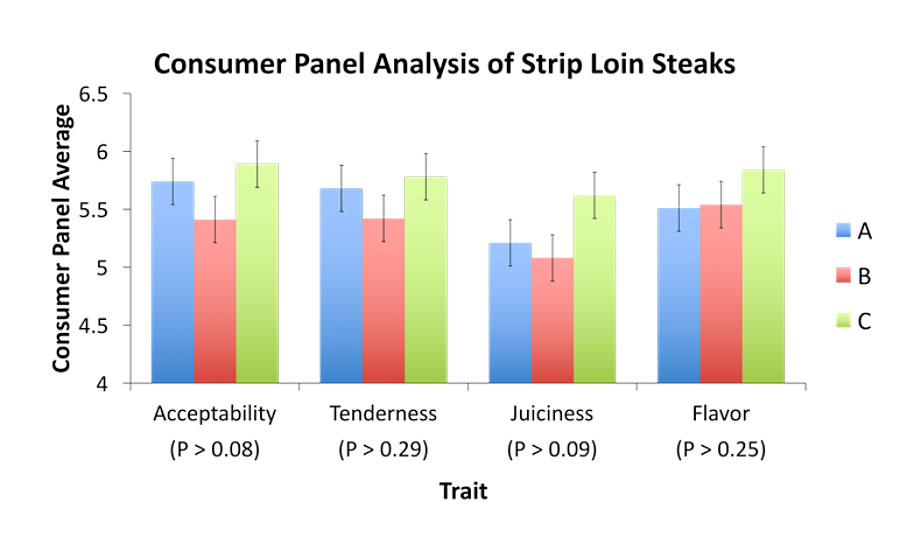
Scale: 9 = like extremely, extremely tender, extremely juicy, and like flavor extremely, respectively; 1 = dislike extremely, not at all tender, extremely dry, and dislike flavor extremely, respectively
Our research suggests that advanced physiological maturity does not decrease palatability of strip loin or outside round steaks from carcasses of heifers less than 30 months of age. These data are consistent with other recent research that identified cattle younger than 30 months (Acheson, 2014; Semler, 2016). Collectively, this information indicates carcasses from cattle less than 30 months of age by dentition could be considered A maturity for grading purposes with no detrimental effect on beef palatability.
The authors are grateful for support from The Beef Checkoff and the Idaho Beef Council. NP
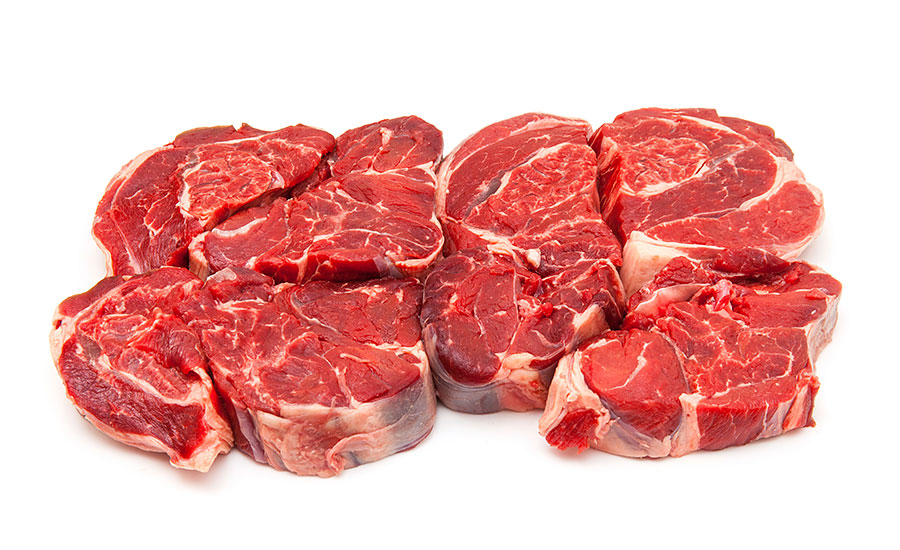
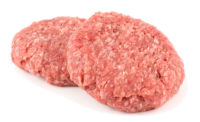
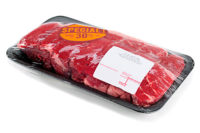
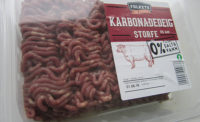
Report Abusive Comment